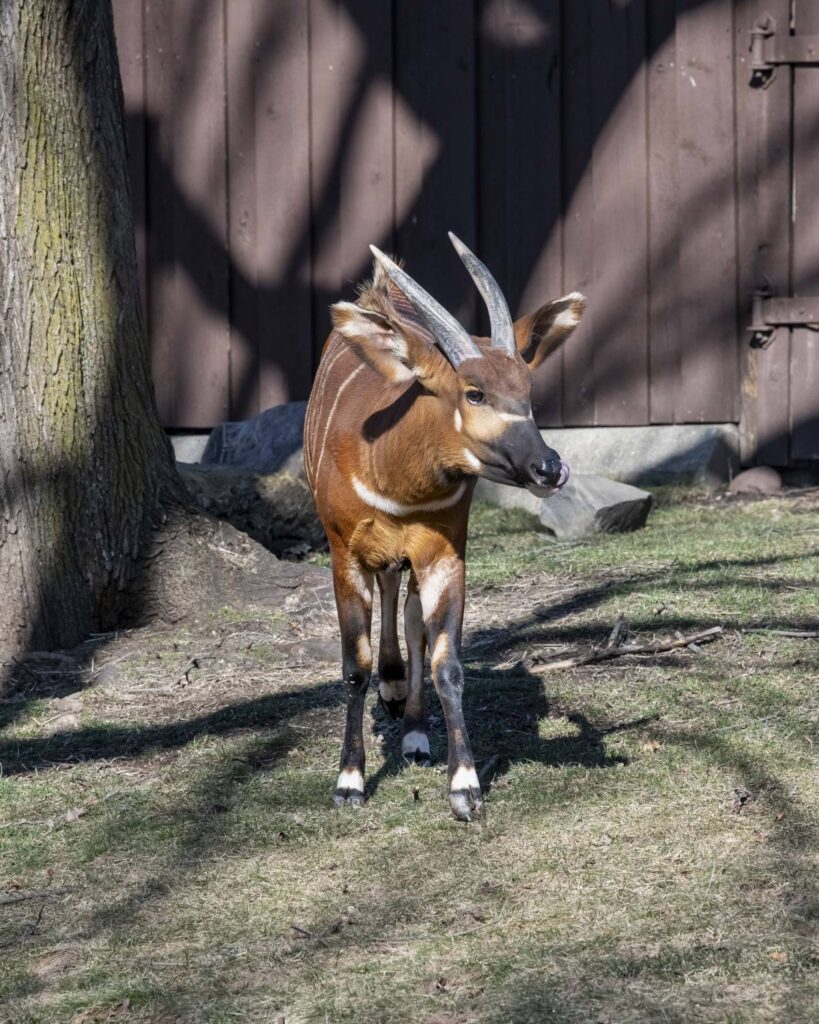
The Milwaukee County Zoo is excited to share that two new residents are now publicly viewable in their outdoor habitats: a female Eastern bongo named Nyota and a female Baird’s tapir named Frida.
Nyota, who recently turned 2 years old, arrived Oct. 26, 2023, from the Dallas Zoo. After completing a standard, 30-day quarantine at MCZ’s Animal Health Center, she was transferred to her new indoor residence in the Impala Barn. Nyota was quickly introduced to our other female Eastern bongos, Zuri, 14, and Sydney, 13, and all are getting along well. 
The animal care team shares, “Nyota is an easy-going animal, and the other girls accepted her right away. Bongos tend to prefer being with other bongos, and Nyota often follows Sydney and Zuri around, hanging out wherever they are.”
The trio can be seen in the African Forest habitat, and guests might even find the females grooming each other occasionally — especially Zuri grooming Nyota. Nyota is the smallest of the group with the shortest horns, while Zuri has crossed horns and Sydney has straighter horns.
The animal care team also notes, “Nyota is very used to human contact and comfortable interacting with her zookeepers, particularly being scratched between her horns. She also likes receiving some of her favorite food items, including romaine lettuce and chopped carrots. The team in Dallas gave Nyota a good base of training, and we’re hoping to continue with that here.”
Also new to the Zoo, Baird’s tapir Frida can be spotted in the South American Yard. Frida is 5 years old and arrived Oct. 3 from the Houston Zoo, also completing her standard quarantine here at MCZ’s Animal Health Center. 
Frida rotates access to the outdoor Yard with Iibu, 6, our resident male. They have yet to be introduced to each other, and in their natural range, Baird’s tapirs are typically solitary. However, once they meet, and if they seem to prefer each other’s company, breeding could be a possibility.
“Frida is very outgoing and inquisitive,” according to her animal care team. “She’s explored the entire outdoor habitat and even waded into the pool a few times already.”
They also share that she doesn’t seem to have a discerning appetite, munching on everything her team offers — but she particularly likes willow browse.
Eastern Bongo Fast Facts:
Baird’s Tapir Fast Facts:
© 2024 Milwaukee County Zoo. All Rights Reserved | Privacy Policy